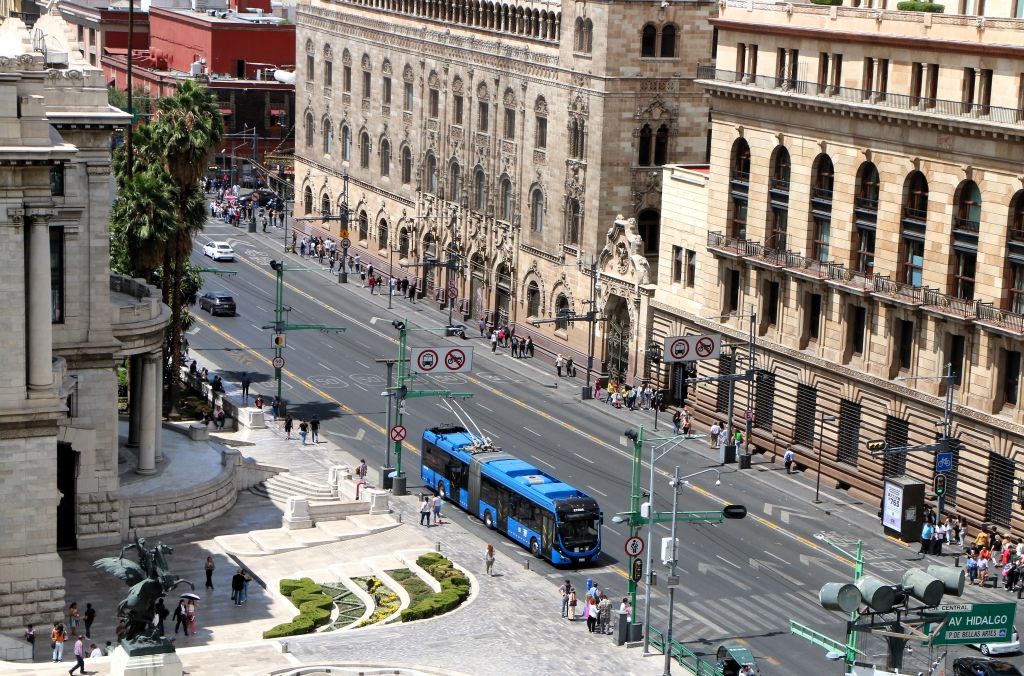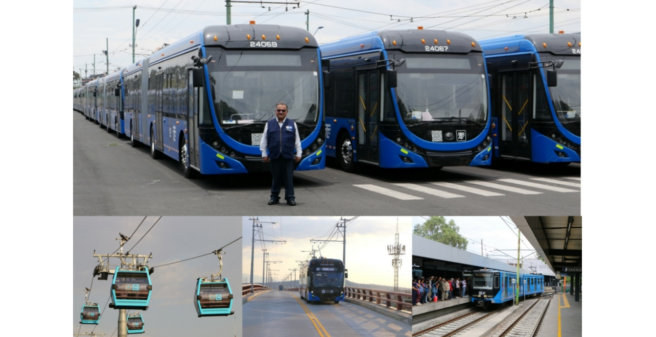
It’s almost a miracle: Over many years, if not decades, the trolleybus network in the Mexican capital – once one of the largest in the world with 30 lines and over 1,100 vehicles – has been shrinking step by step, until a few years ago there were just 130 vehicles running on only 8 lines, and often only at irregular intervals. The operator Servicios de Transportes Eléctricos (STE) was in a very difficult situation and thus it came as no surprise that potential passengers looked for other, often even less comfortable means of transport such as minibuses and diesel buses. The investment backlog was almost more than obvious – the infrastructure neglected, the trolleybuses themselves all between 20 and 35 years old and in a run-down condition.
But then came the turnaround. After the change in the city government in 2019, the new administration under the newly elected mayor Claudia Sheinbaum set out to make good on one of its election promises: To quickly improve public transport and push ahead with the electrification of the bus fleet. The (re-)construction of various trolleybus lines and the procurement of 500 new trolleybuses were partof the election programme. We reported here:
https://www.urban-transport-magazine.com/en/start-of-operation-and-further-yutong-low-floor-trolleybuses-in-mexico-city/.
The investments are not only noticeable in the form of new vehicles and new infrastructure. Passenger numbers have also increased significantly. While in 2019 only 120,000 passengers dialy used the STE’s lines, in 2023 the average will be 315,000 passengers per day, i.e. far more than double.
500 new trolleybuses!
And so, in 2019, the most comprehensive fleet renewal in the long history of the operation actually began and is nearing completion this year. We paid a visit to STE in July 2023: its Director General Martín López Delgado informed us in detail and not without pride about the comprehensive transformation of the company – including the expansion plans still to come.
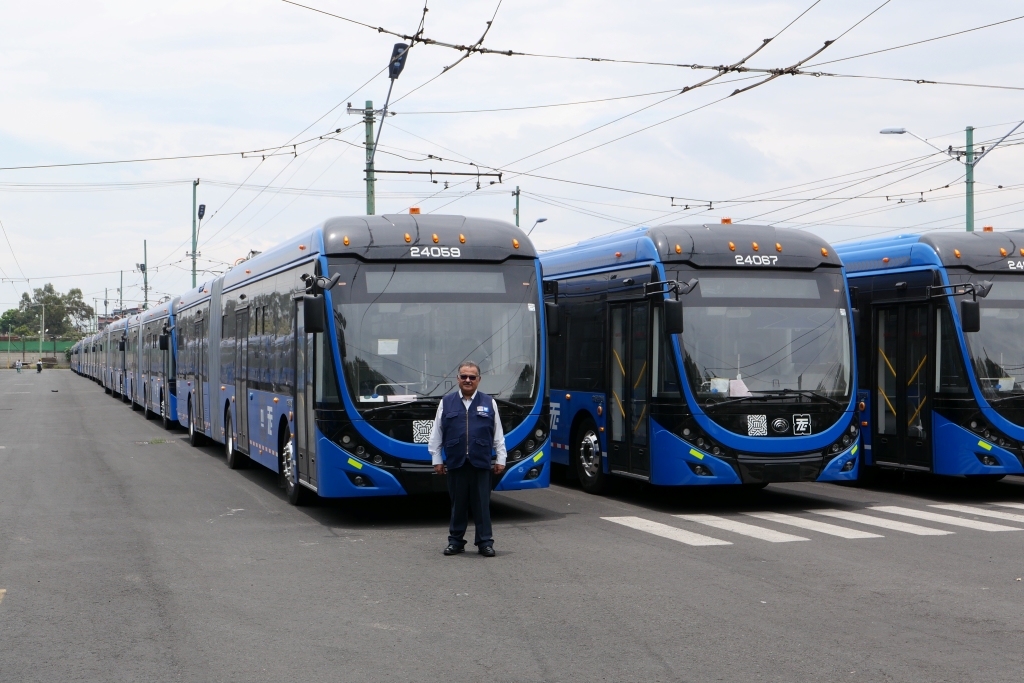
Since 2019, the STE has procured a total of 425 new trolleybuses from the Chinese manufacturer Yutong in several waves, including 152 articulated vehicles. They are numbered as follows:
Yutong 12 m two-axle trolleybuses: 20001 – 20143 (years of construction 2019-2020), 22001 – 22108 and 23001-23022 (years of construction 2022-2023): 273 in total
Yutong 18 m articulated trolleybuses: 21001 – 21050 (year of construction 2020), 24001-24102 (year of construction 2023): 152 in total
In addition, another 17 new trolleybuses have been purchased by two private operators for use on the new line 10: three Yutong 12-metre buses by the operator CE4, numbered CE410-001 to 003, which are identical to the model which bought STE, and 14 Chinese Zhongtong 12-metre trolleybuses by the operator IXTAPALLI, numbered IXT10-001 to 014. Within a year, the procurement of another 70-75 new trolleybuses is planned, which will probably also be purchased by private operators. However, the final decision on this has not yet been made.
All older trolleybuses have been taken out of service by January 2023 and most of them have already been scrapped. The only exceptions are twenty 9700/9800 series trolleybuses, which were slightly modernised in 2020/21 and repainted to the current blue colour scheme. They have also been parked since January, but remain in the northern Aragón depot as an operational reserve to be used on Line 4 if necessary.
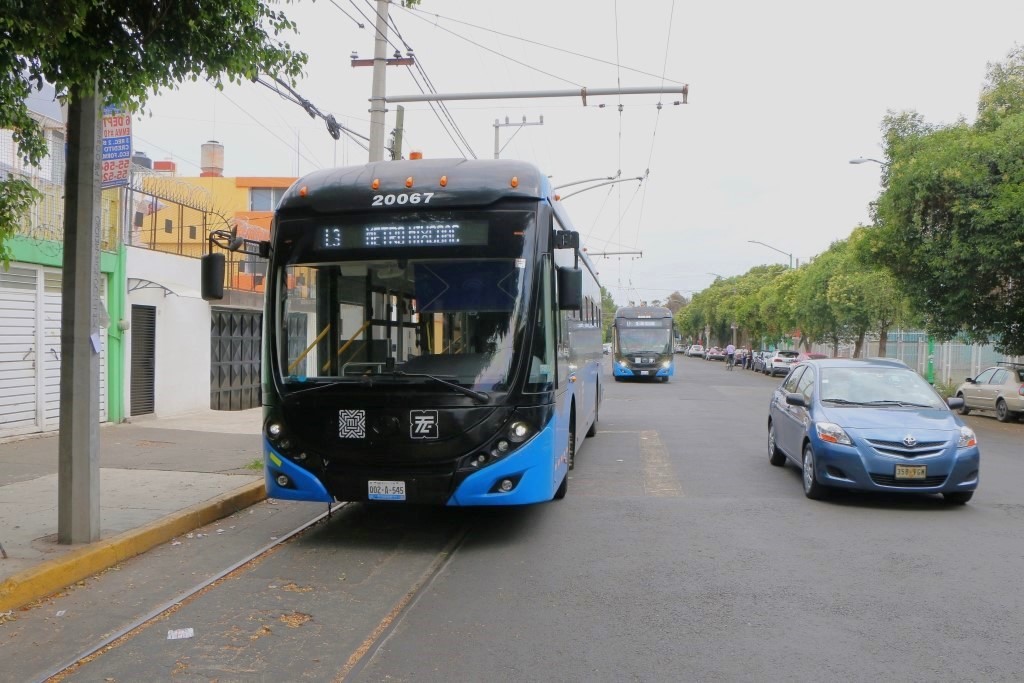
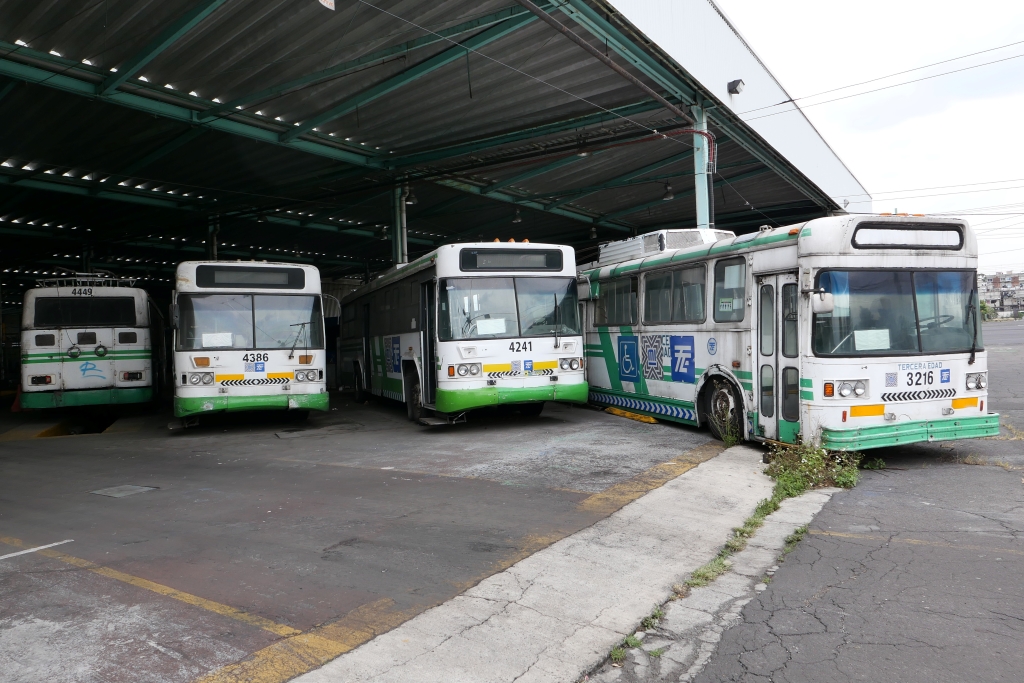
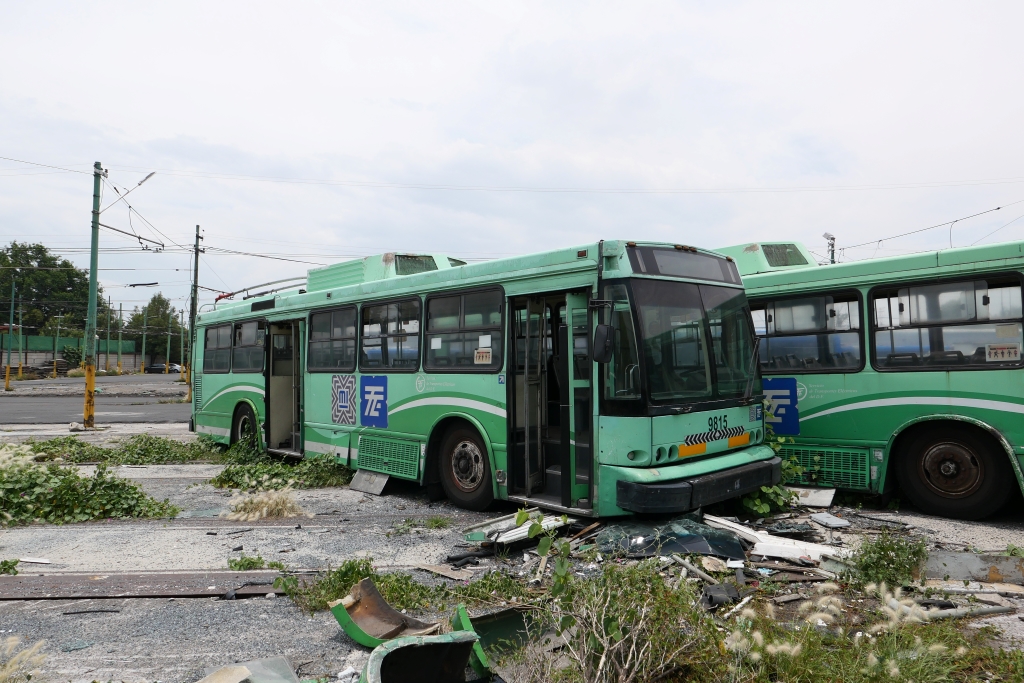
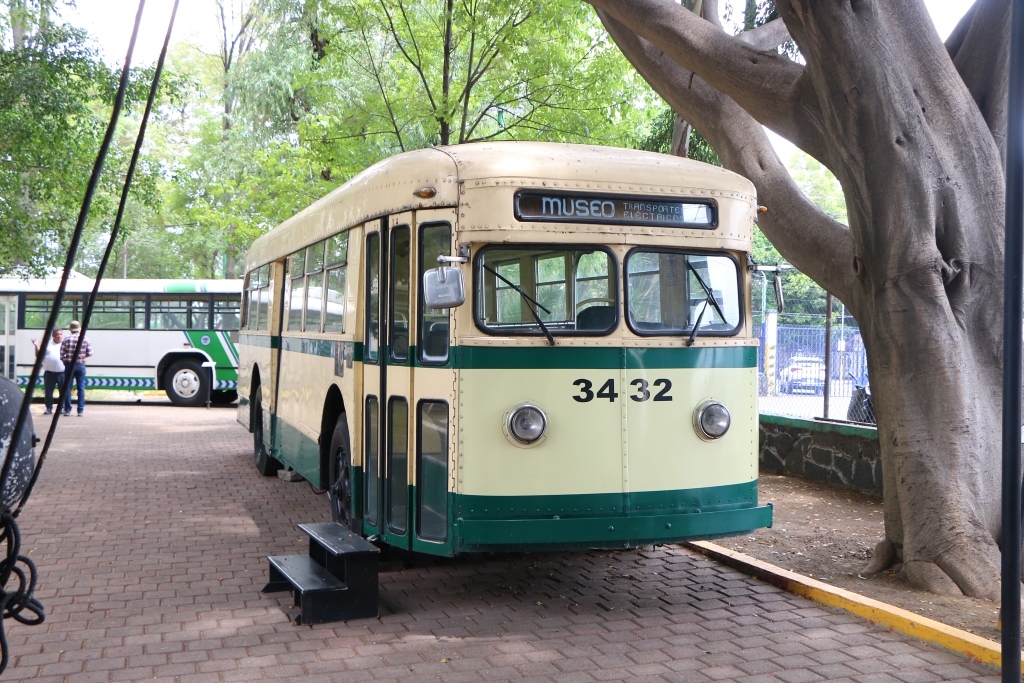
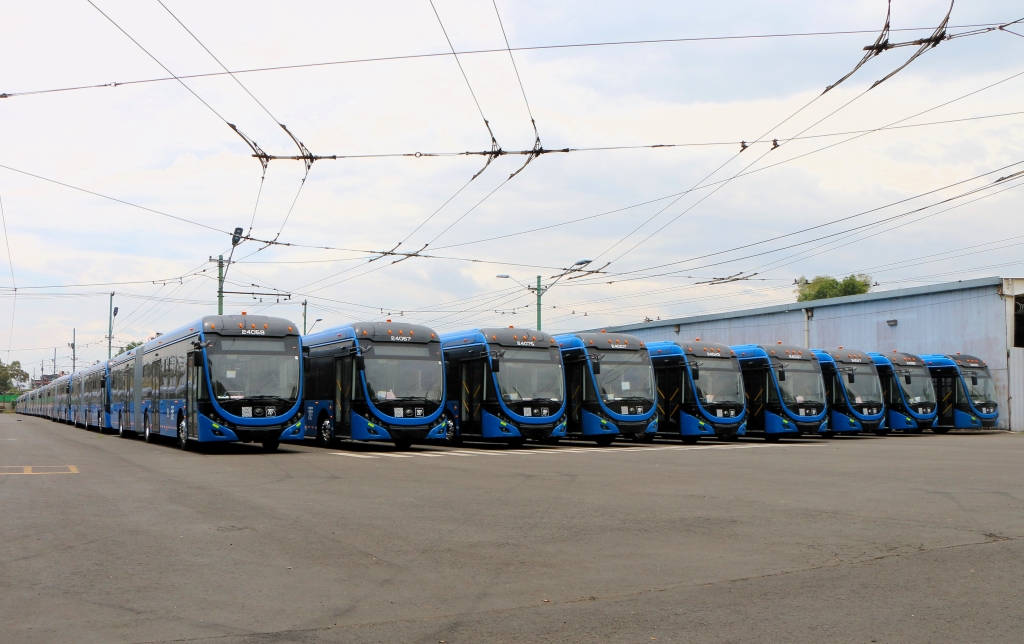
Network extensions for the trolleybus
The comprehensive modernisation not only affected the fleet, but also the infrastructure. For example, about 30% of the previously copper supply cables were replaced by aluminium ones. The network also underwent a significant expansion. A new line 9 went into service on the route of the former M Metro Apatlaco and Villa de Cortés in January 2021, and in the south-eastern part of the city a trolley bus line 10 was built in a short construction time on its own track, elevated like an elevated railway, which we reported on here:
https://www.urban-transport-magazine.com/en/mexico-city-an-elevated-brt-trolleybus/ .
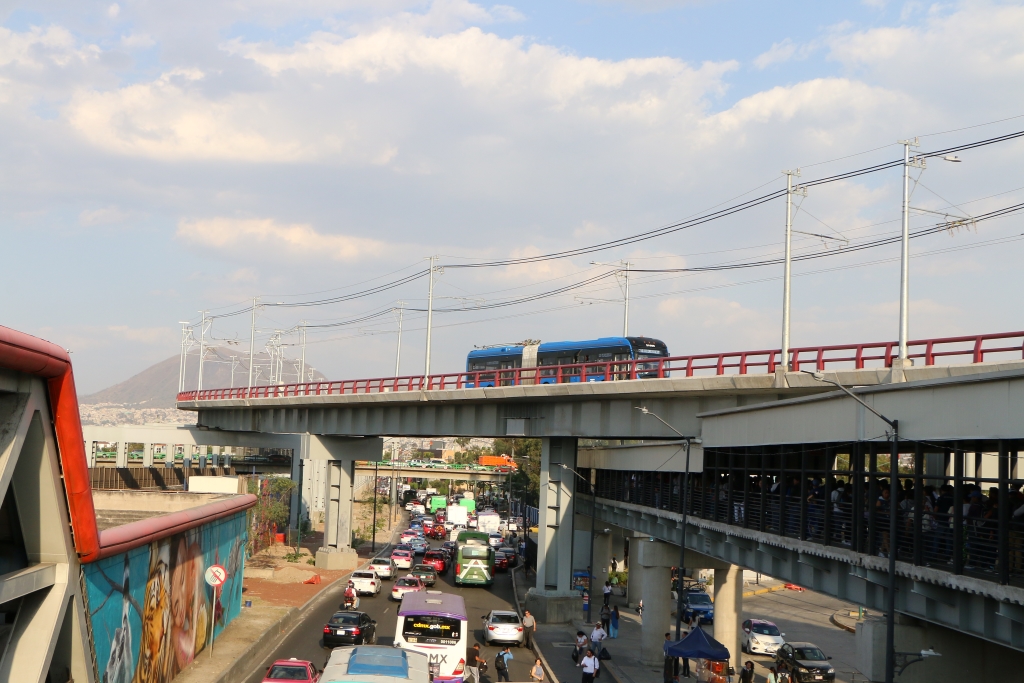
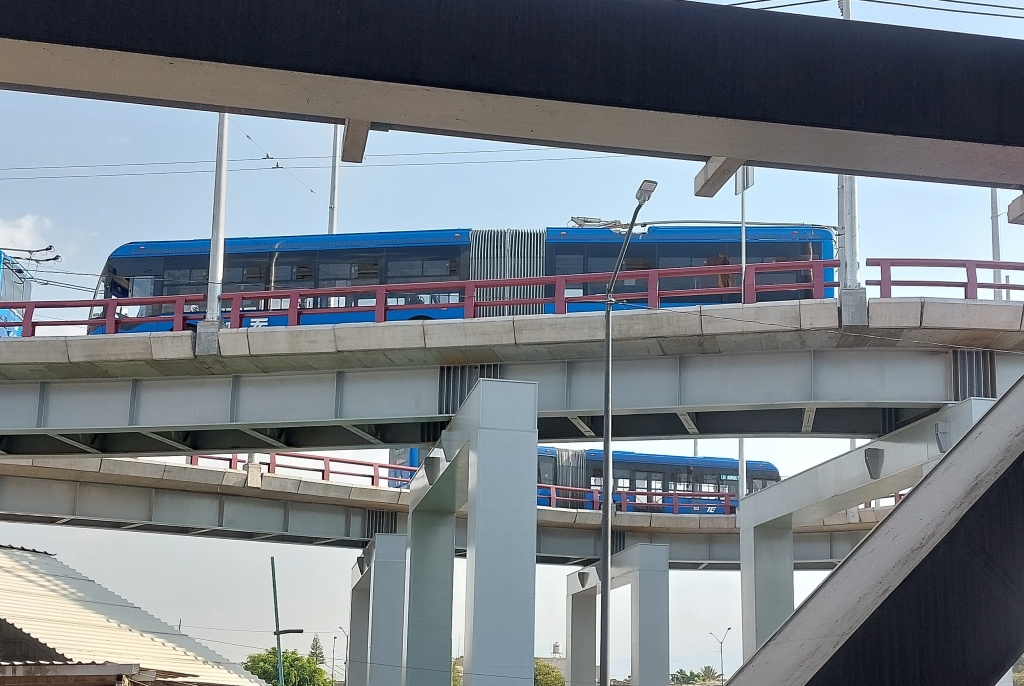
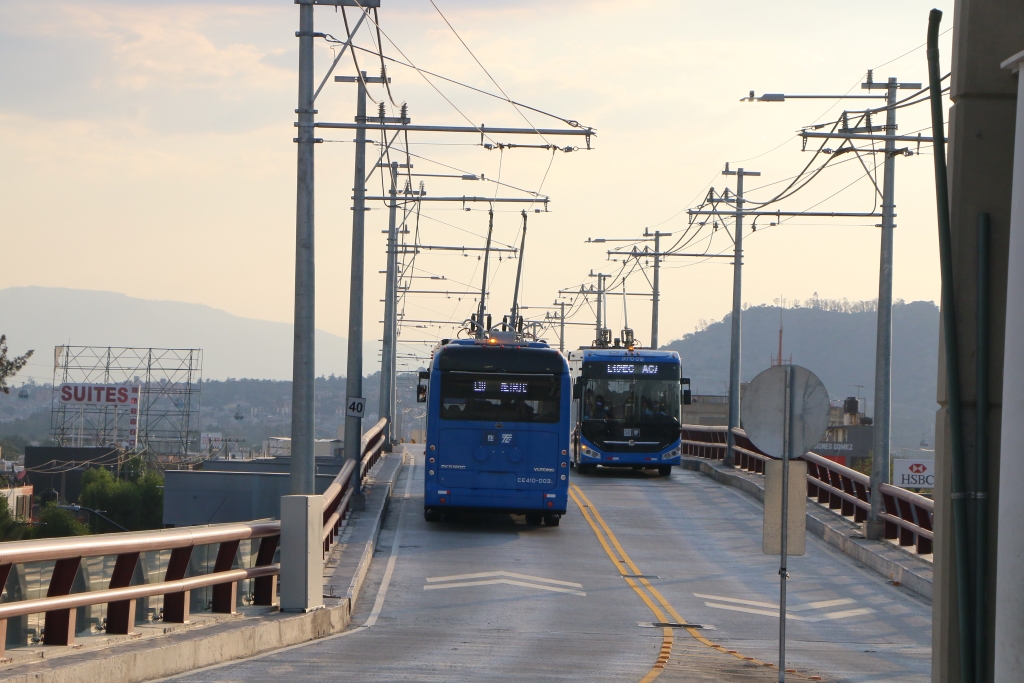
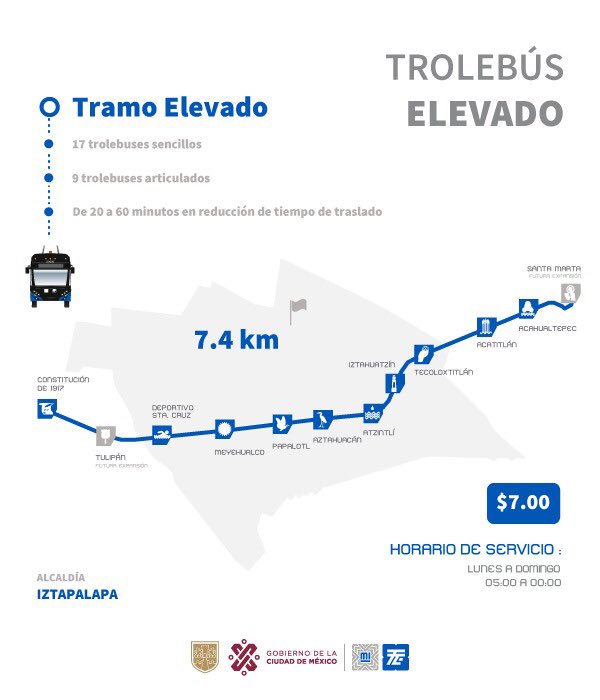
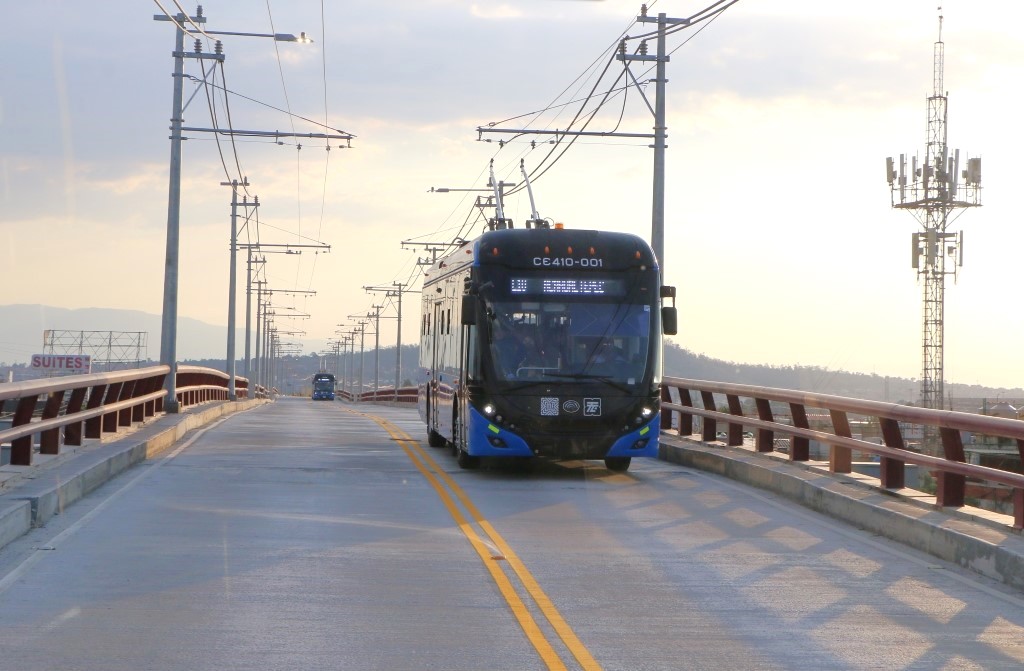
This “Trolebús Elevado” has been running since October 2022 between the Constitución de 1917 metro station, initially as far as Acahualtepec; the extension by one stop to Santa Marta is expected by December 2023. The Tulpán stop, which has not yet been put into operation, has already been completed. In Santa Marta, the new line 11 will connect to the suburb of Chalco in the hinterland, also largely on its own track, over a length of 18 km. It will run partly on elevated tracks and partly in the middle of a motorway. Here, a larger part of the most recently procured 102 articulated wagons will be used, which – just delivered – are currently parked in the main Tetepilco depot. Line 11 is expected to be commissioned in the first half of 2024. Another current expansion project on the agenda for the same period is the extension of line 10 at the other end, albeit at street level and not elevated, from Constitución de 1917 to Metro Mixcoac. Up to Insurgentes, the catenary of the former Line E will be rebuilt along the so-called Eje 8 Sur, while the remaining stretch to Mixcoac will be covered by trolleybuses running on batteries. The STE has already had good experience with this, so three of the existing trolleybus routes have already been extended beyond their end points to routes that have no overhead line and are therefore covered in battery mode. These are:
Line 2: Due to the complete modernisation and temporary decommissioning of metro line 1 between the city centre and Pantitlán, trolley bus line 2 was extended by 9.5 km from the previous terminus Velodromo to the Pantitlán metro junction on 11 January 2021 and turns here in a block bypass.
Line 5: Since 7 March 2023, this line has been extended in the mornings and evenings during rush hour from the previous terminus Metro Hidalgo by approx. 3 km to the Diana Fountain on the boulevard Paseo de la Reforma. The bus lane and the existing stops of the BRT system Metrobus are used.
Line 7: Following the tragic collapse of a viaduct on metro line 12 on 3 May 2021, metro services on this line were suspended until further notice or resumed later in the tunnel area. As a replacement, trolleybus services of the existing line 7 from Taxqueña, among others, have been extended and run parallel to the route of line 12 to Tláhuac over a distance of approx. 25 km.
The new line 10 is partially operated in battery mode, too, due to the still incomplete overhead infrasturcture on the new Trolebus Elevado route. In addition, battery mode is also regularly used for diversion and transfer runs, for example on line 9, where a weekly market is held twice a week on the Avenida Canal de Apatlaco, so that the existing overhead line cannot be used. As a diversion, the battery trolleybuses run in battery mode via parallel streets where there is no overhead line. Trolleybuses also ran as a substitute during the construction work on the Tren Ligero light rail in winter 2021/22 and then recharged their batteries when subsequently used on main line 1. The trolleybuses have a range of up to 75 km in battery mode. The STE has even covered up to 100 km off-wire during test runs.
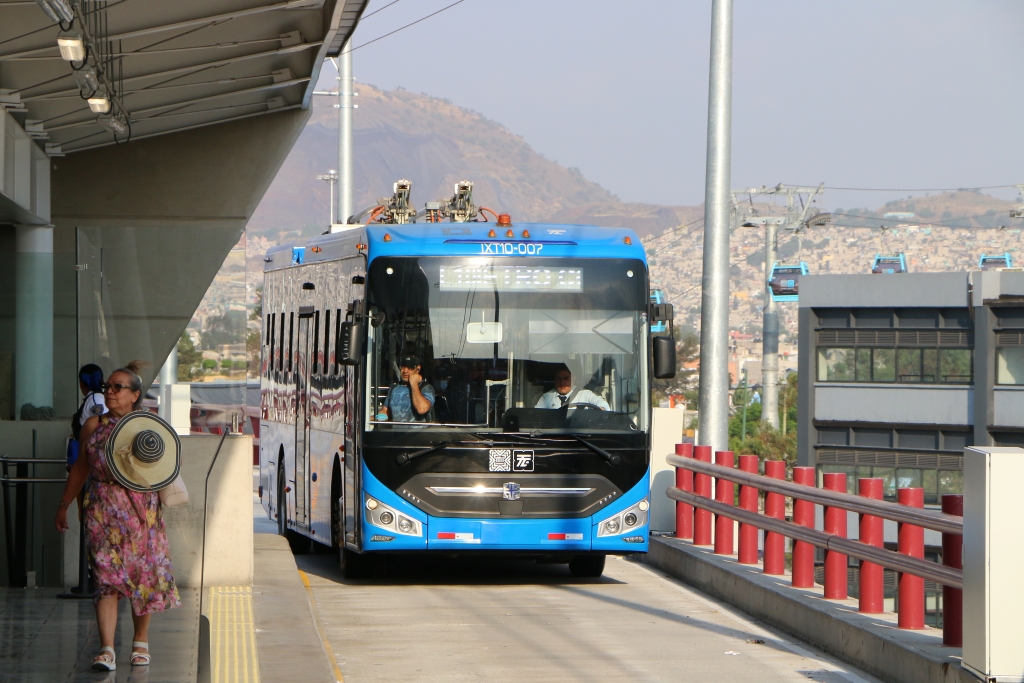
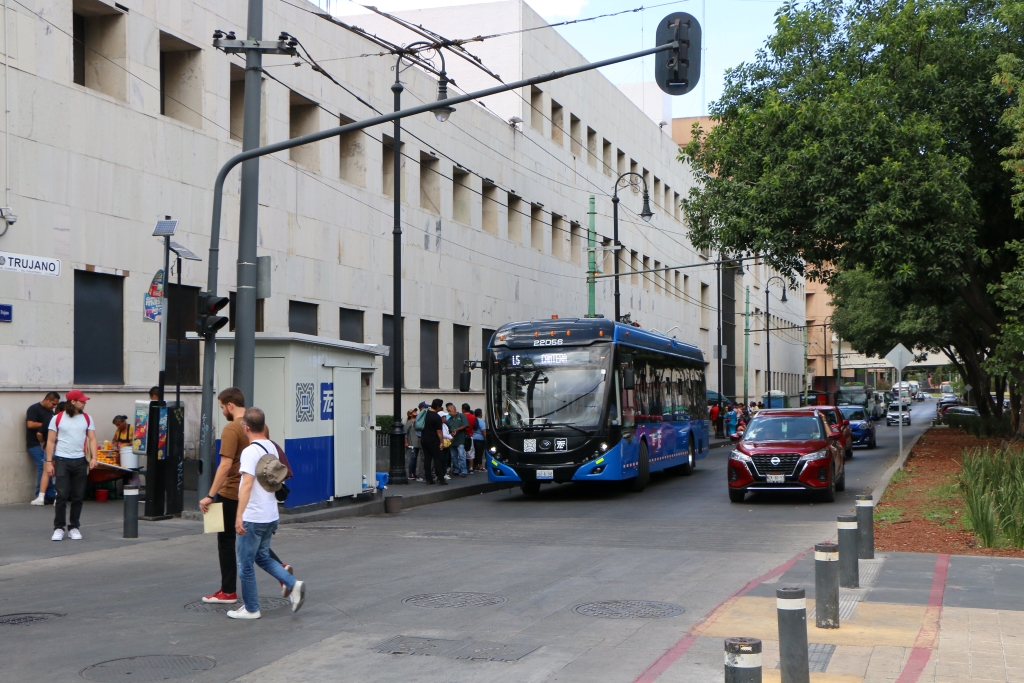
Tren Ligero
The 13 km Tasqueña – Xochimilco light rail line is also operated by the STE, unlike the metro lines. Its entire line was extensively modernised in 2019/2020, and the STE also invested in the power supply. We had already reported on the procurement of 9 additional trains from the Chinese manufacturer CRRC Zhuhou here: https://www.urban-transport-magazine.com/en/new-light-rail-vehicles-for-mexico-city/ .
The first of these new trains is due to arrive this autumn; it was already presented to the manufacturer in September 2023. This means that 21 articulated railcars will be available in the long term, which should allow a doubling of the frequency on the very heavily demanded line.
Plans from the 1990s to serve other suburbs with light rail are currently not being pursued. Instead, the city government and STE are now relying fully on the above-mentioned trolleybuses on their own tracks.
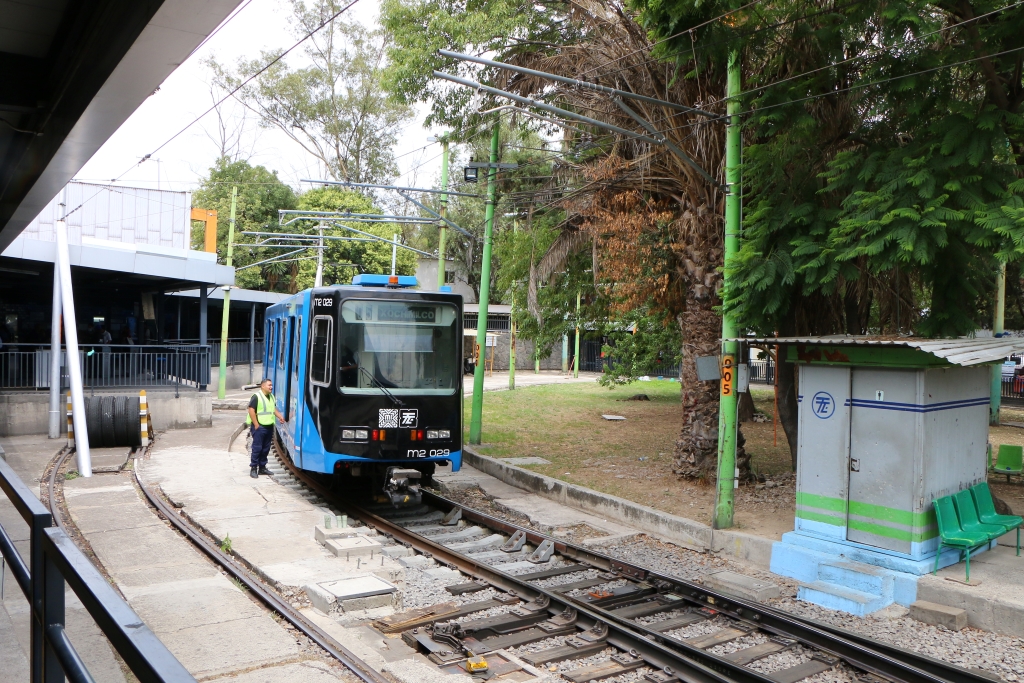
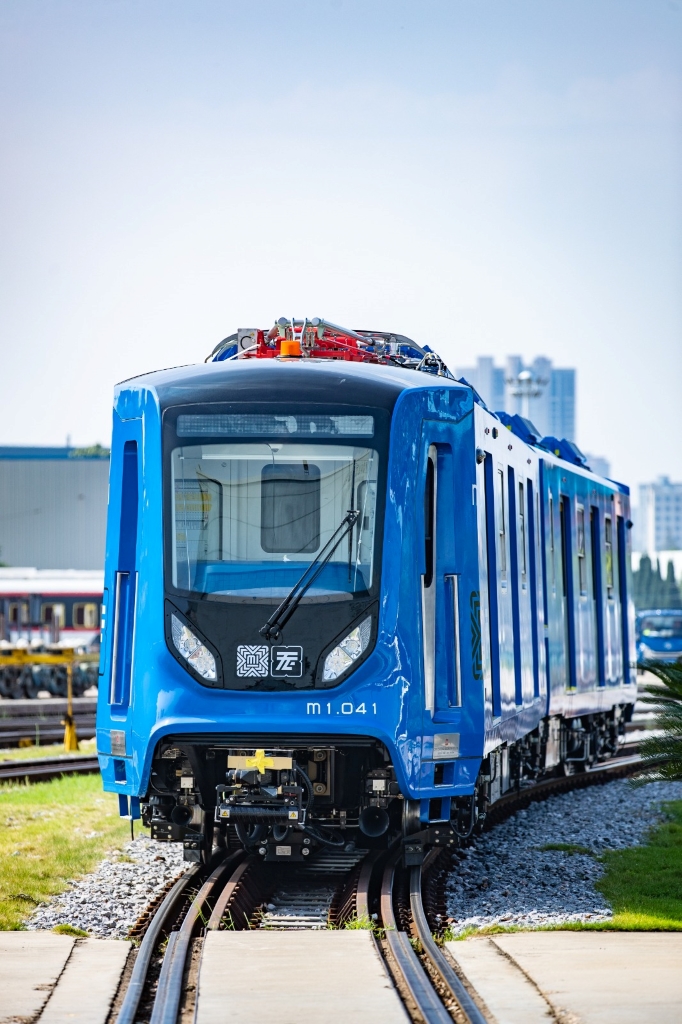
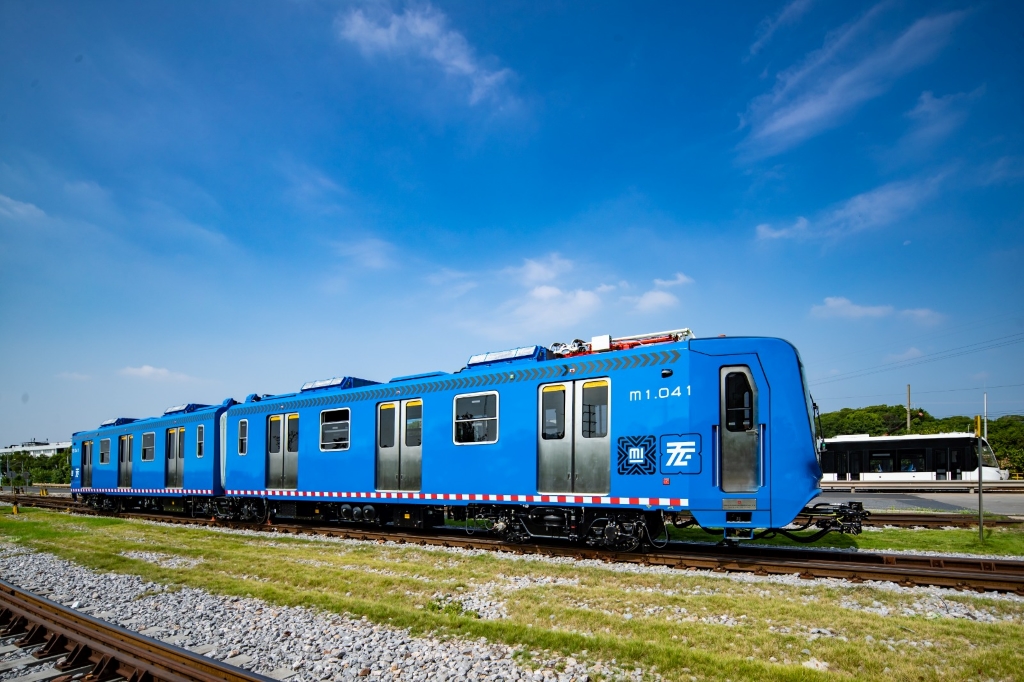
Cablebús
The STE is also the operator of the two cableway lines Cablebús 1 and 2, which were opened in July and August 2021 provide good access especially to poorer and socially disadvantaged neighbourhoods. Line 1 was built by Doppelmayr, line 2 by Leitner. The lines quickly proved to be very successful. A third line in the central district of Chapultepec is under construction and is scheduled to open by early 2024.
While line 1 has a branch to Tlalpexco, the 10.6 km long line 2 runs over the densely built and populated hills of Iztapalapa. Due to its length, the line has been entered in the Guinness Book of Records in 2021 as the world’s longest cable car line. It connects both end points of the described Trolebús Elevado, but passes over the previously difficult-to-access neighbourhoods on the hills of Iztapalapa, where there are also many informal settlements. The 9.2 km long line is the second longest line in the world. The following table gives an overview of the technical parameters of the lines.
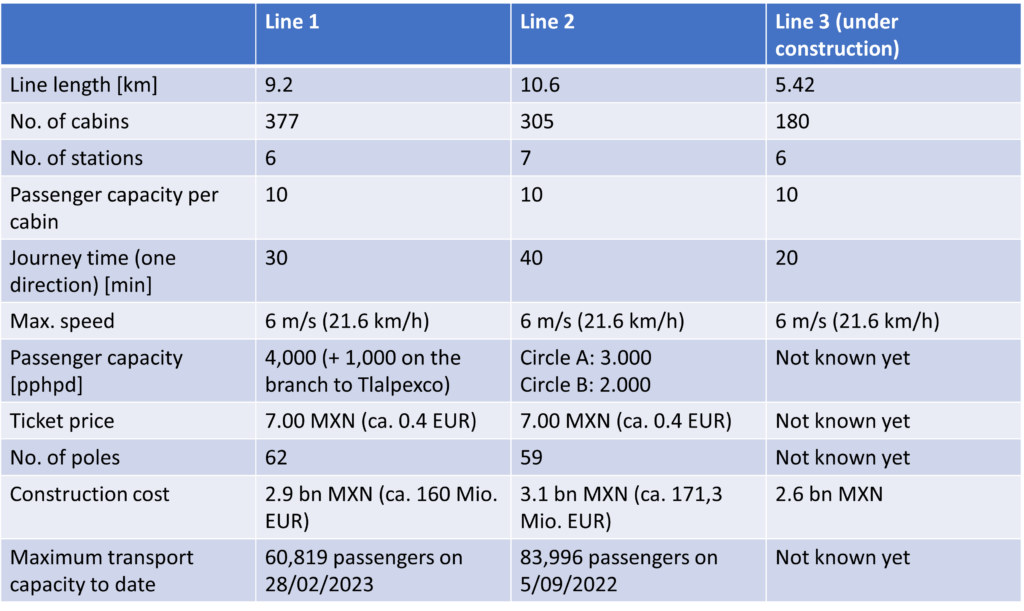
The third urban ropeway line, approx. 5.4 km long, will serve not only as a feeder between the Tren Interurbano, a new suburban railway line from Toluca to Mexico City, which is also under construction, and the Chapultepec public transport hub, but also as a tourist attraction, as the large Chapultepec Park with the Habsburg Castle, the zoo and large parks are an important crowd puller.
In addition, two other cable cars have existed in the north of the city since 2016/23, supplied also by Leitner, however, they are operated by the Gobierno del Estado de México (State of México, which is a separate state and surrounds the city of Mexico) under the name “Mexicable”.
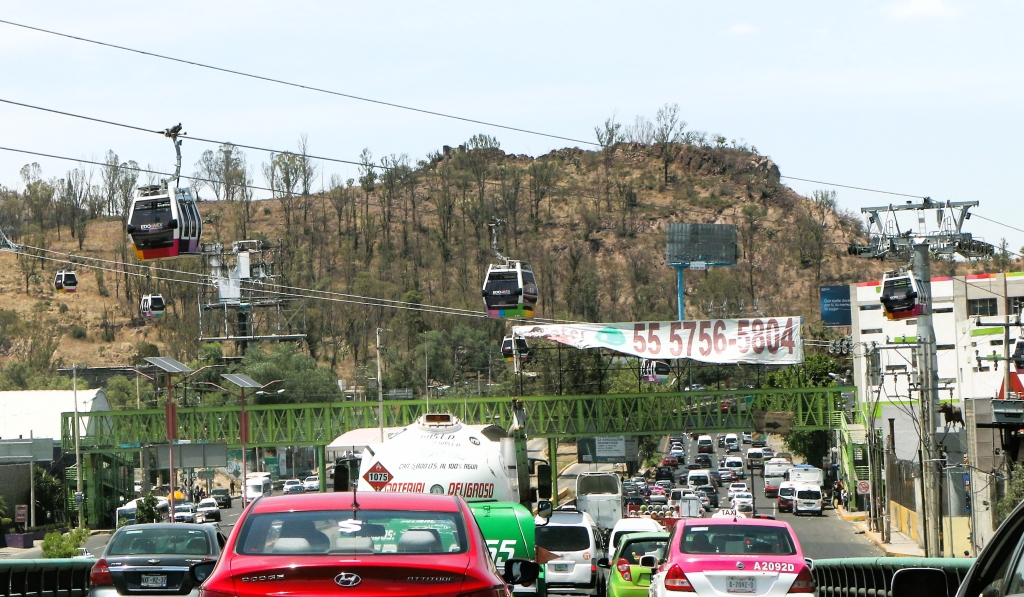
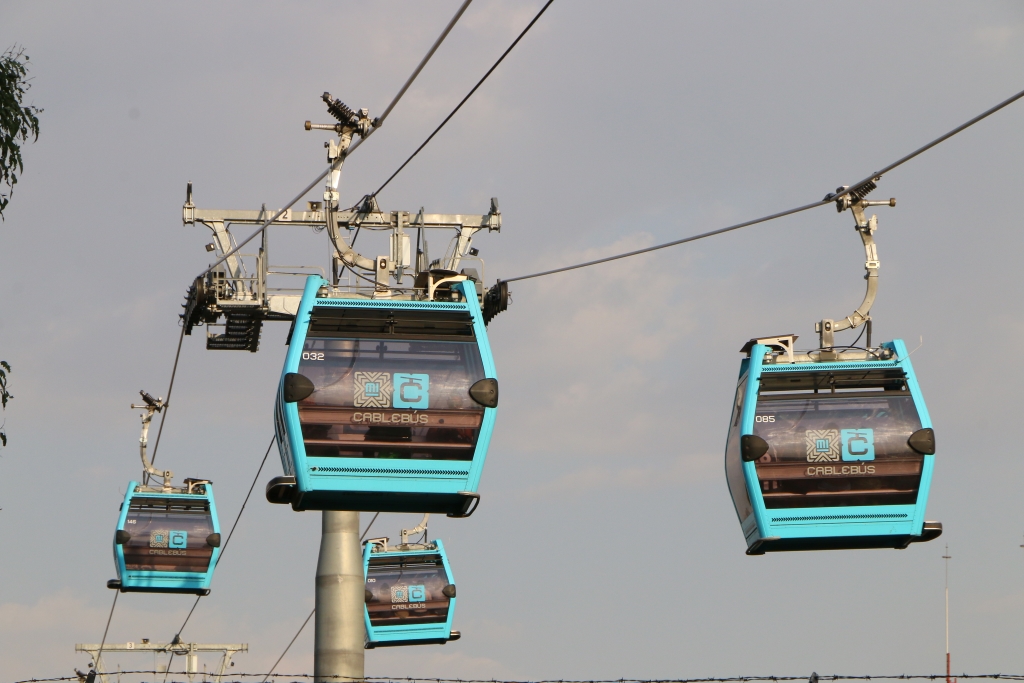
Additional reports about urban transport in Ciudad de México:
